Recognized by UNESCO as an exceptional example of a Mediterranean landscape, the Amalfi Coast stands out as one of Italy’s most unforgettable destinations. Towering mountains dramatically descend into the sea, creating a striking panorama of steep cliffs, hillside homes, and lush forests.
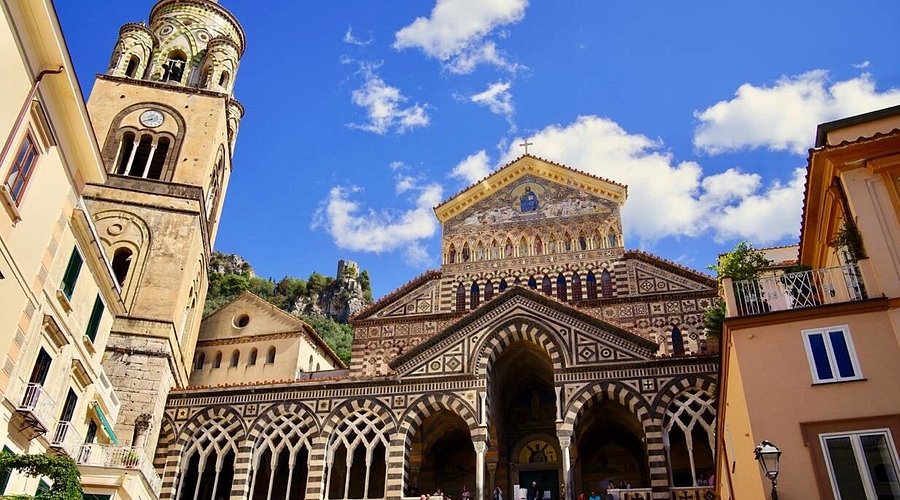
Once the emblem of Amalfi’s maritime might, the Cattedrale di Sant’Andrea (also called the Duomo di Amalfi) remains the town’s most iconic landmark. A trip to the Amalfi Coast feels incomplete without climbing its grand staircase or snapping a photo on its famous steps.
This cathedral is a vivid reminder of Amalfi’s rich history as a cultural crossroads in the Mediterranean. Its eclectic style reflects centuries of renovations and artistic influences. The monumental complex includes the main cathedral, atrium, the Cloister of Paradise, the crypt, and the Church of the Crucifix.
Amalfi, one of the first maritime republics, was a powerful trading hub in the Middle Ages. The cathedral’s layered design tells the story of this era. Originally built in the 6th century, the church was expanded in the 13th century to enshrine the relics of St. Andrew, brought from Constantinople in 1208 after the Fourth Crusade.
Step into Piazza Duomo, and the cathedral instantly commands your attention. Towering above the square by 20 meters (66 feet), the church is reached by 62 wide steps. Before heading up, take a moment to cross the piazza for different angles—locals say the best view is from the harbor, with the cathedral framed by colorful buildings and the bell tower peeking through.
At the foot of the stairs, admire the ornate facade with its vivid mosaics, striped columns, arched windows, and majolica tiles. At the top, pause in the atrium, where you’ll find the imposing bronze doors cast in Constantinople in 1057—the first of their kind in Italy, symbolizing Amalfi’s historical prestige.
Cool down in the shade of the triple-arched windows and soak in the contrast between the dark atrium and the bright sunlit square. It’s also a perfect photo spot, often framed by tourists in the archways.
Continue to the Chiostro del Paradiso, a Moorish-style cloister built in the 1260s as a noble burial ground. Entry is €3, granting access to the full complex. Here, the contrast is striking: the white marble arches and 120 slender columns reflect blinding daylight, while a peaceful garden at the center adds lush green to the scene. The silence of the cloister offers a moment of calm, interrupted only by the breeze and whispers of history.
Walk around the perimeter to find 13th-century frescos, crumbling mosaics, and ancient sarcophagi featuring Greek and Roman mythological scenes.
Next, explore the Basilica of the Crucifix, the original 6th-century church, now home to the Diocesan Museum. Here, you’ll find relics, religious artifacts, and Roman-era columns.
Descending into the crypt beneath the church reveals a cool, serene space—Amalfi’s summer heat replaced by hushed reverence. Lavishly decorated in Baroque and Mannerist style under King Philip III of Spain, the crypt houses the tomb of St. Andrew. At its heart lies a sacred ampulla, said to contain the miraculous manna—a liquid that emerges from the tomb on his feast days, June 27 and November 30. On these days, Amalfi comes alive with processions and celebrations.
Finally, enter the main Cattedrale di Sant’Andrea. Its original Romanesque layout gave way to the opulence of the 18th-century Baroque renovation. The golden ceiling glows, punctuated by frescoes by Francesco Solimena, depicting moments from St. Andrew’s life, including his crucifixion above the main altar.
As you explore the side chapels, observe the mix of Gothic, Moorish, Renaissance, and Rococo influences—a true mosaic of styles reflecting Amalfi’s multicultural legacy.
Entrance Fee: Free during mass; otherwise, €3 for full access (cloister, crypt, and museum).
Opening Hours:
March–June: 9:00am–6:45pm
July–September: 9:00am–7:45pm
November–February: 10:00am–1:00pm & 2:30pm–4:30pm
Dress Code: Modest clothing is required, as this is a place of worship.
Don’t miss the Fountain of Sant’Andrea in the piazza. This Baroque marble fountain depicts the saint with his saltire cross, surrounded by mythical figures including a siren, a satyr, and an eagle—carved in the 1500s. It’s a charming spot for photos and a deeper appreciation of Amalfi’s layered history.
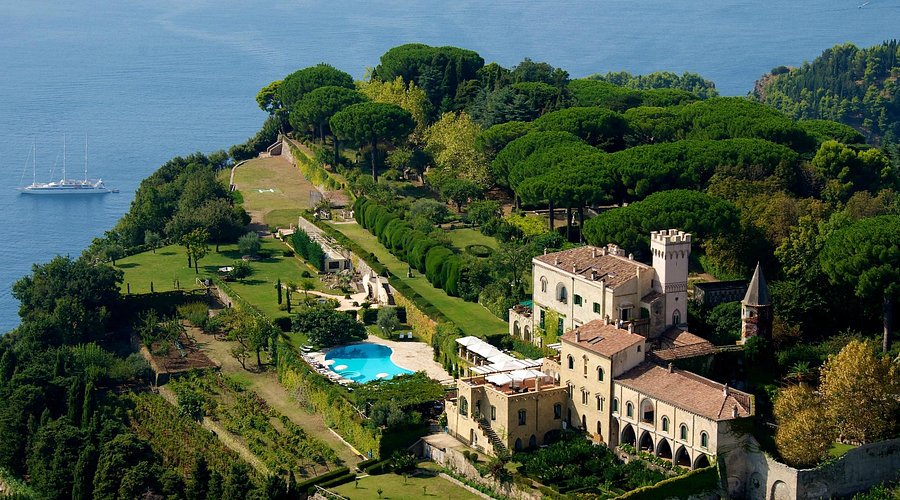
If there’s only one place you visit in Ravello, make it Villa Cimbrone. Just a 10-minute walk from Ravello’s main square—through a maze of charming alleys—Villa Cimbrone feels worlds away. Its sweeping views, romantic gardens, classical statues, and centuries-spanning architecture embody the very soul of the Amalfi Coast.
More than just a villa, it’s an open-air museum and a tribute to romanticism. The vast 6-hectare (14.8-acre) grounds steal the spotlight from the villa itself, with English and Italian-style gardens blending gracefully with classical-inspired architecture. This rich mix of eras and cultures creates an atmosphere that feels almost otherworldly.
Here, you’ll meet travelers from across the globe—some admiring the art, others celebrating weddings or performing music against the dramatic Tyrrhenian Sea backdrop. And for photography lovers, the famed Infinity Terrace offers the ultimate snapshot moment.
Passing through ivy-covered gates, you’ll reach a cloister and crypt with a mix of Gothic, Arabic, and Venetian details—surprisingly only a century old. Standing just before the terrace is the statue of Ceres, goddess of the harvest, guarding what is also called the “Door to the Sun,” an elegant stone temple capped by a dome.
Perched 300 meters (984 feet) above sea level, the Infinity Terrace is lined with marble busts overlooking a surreal view where sea and sky melt into one. The scene is serene and sacred—offering a moment of peace high above Amalfi, with the mountains of Cilento on the horizon.
From the terrace, head to the Hill of Mercury to find the bronze statue of the resting Hermes. On the way, a quiet bench beneath an oak bears a poetic inscription:
“Lost to a world in which I crave no part, I sit alone and commune with my heart…”
Though often misattributed to D.H. Lawrence, the lines echo the deep sense of stillness the villa inspires.
Continue through cypress- and lavender-lined paths to the Temple of Bacchus, nestled in a secluded corner with its own scenic overlook. Further on is Eve’s Grotto, where a shy statue of Eve hides quietly among the foliage.
As you circle back, explore the Avenue of Hortensia, admire a replica of Donatello’s David, peek into a Moorish-style tea room, and stroll the wisteria-draped Avenue of Immensity. Before exiting, pause at the Rose Terrace, a geometric bloom of vibrant colors (best between May and October), centered around a sundial and flanked by Greco-inspired statues.
More than 2,000 years ago, this hilltop area was known as Cimbronium. It remained a noble estate through the Middle Ages and was once tied to the royal families of Naples. In 1904, English nobleman Lord Beckett bought the property during his Grand Tour and began restoring its charm.
Villa Cimbrone soon became a magnet for artists and intellectuals. Members of the Bloomsbury Group—including Virginia Woolf, Vita Sackville-West, T.S. Eliot, and E.M. Forster—were regular visitors, often contributing to the garden’s evolving design.
The villa also welcomed icons like Winston Churchill, Maynard Keynes, and Greta Garbo, who famously escaped here with Leopold Stokowski in 1938—a moment commemorated with a plaque on-site.
The 10-minute walk from Piazza Duomo is scenic but steep. Wear good shoes—the stone alleys can be slippery.
If you think you’re lost, you’re probably on the right path—getting there is part of the experience.
Visit early morning or late afternoon to avoid the midday heat (11 AM–3 PM). Bring water; the on-site café is lovely but pricey.
The villa itself is now a luxury hotel with a Michelin-starred restaurant (Il Flauto di Pan), another that revives traditional flavors (Mediterraneo), a wine cellar, lounge bar, and café.
Admission to the gardens is €10, and they’re open daily from 9 AM until sunset. Tickets are available at the gate. Guided tours can be arranged through Hotel Villa Cimbrone.
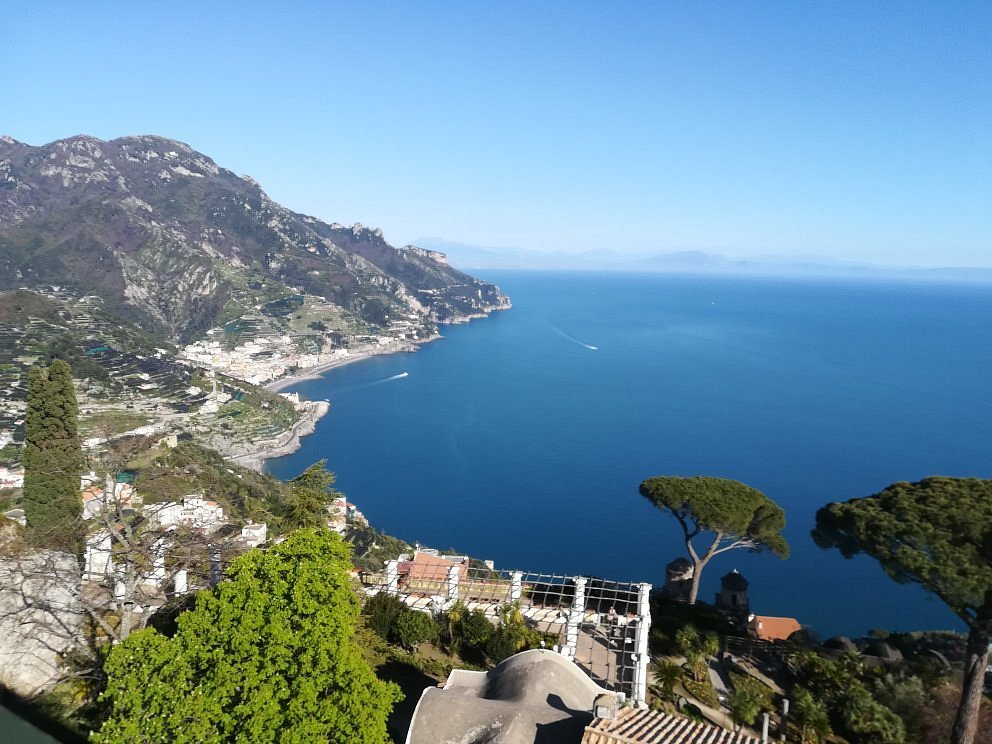
Just south of Ravello’s cathedral, a 14th-century tower marks the entrance to Villa Rufolo, renowned for its enchanting tiered gardens. Designed in 1853 by Scottish botanist Sir Francis Neville Reid, the gardens offer breathtaking panoramic views, bursting with vibrant exotic plants, ivy-clad towers, and lush floral displays. While they are truly spectacular from May through October, the experience may not justify the entrance fee outside of this blooming season.
Originally built in the 13th century for the affluent Rufolo family, the villa has hosted popes and even King Robert of Anjou. The gardens famously inspired composer Richard Wagner during his 1880 visit, influencing his vision for the magical garden of Klingsor in Parsifal.
The imposing 13th-century Torre Maggiore now houses the Torre-Museo, an interactive museum that explores the villa’s history and its notable figures, including Reid, who carefully restored the estate in the 19th century. The museum features art, archaeological artifacts, and ceramics associated with the site. A staircase inside the tower leads to an outdoor terrace with stunning views over the villa and the Amalfi coastline.
Today, Villa Rufolo’s gardens also serve as an atmospheric stage for concerts during Ravello’s celebrated annual arts festival.

Just a few kilometres east of Praiano’s centre lies a picturesque beach and harbour — the main draw for visitors to this peaceful town. From the SS163 road, near Hotel Onda Verde, a steep path winds down the cliffs to a secluded cove with a narrow strip of coarse sand and irresistibly clear waters. Some of the best swimming is actually off the rocks just before you reach the bottom.
Nestled into what were once fishermen’s homes, you’ll now find a handful of inviting restaurants and a couple of diving centres. Boat rentals are also available here, starting at around €90 for a two-hour outing.
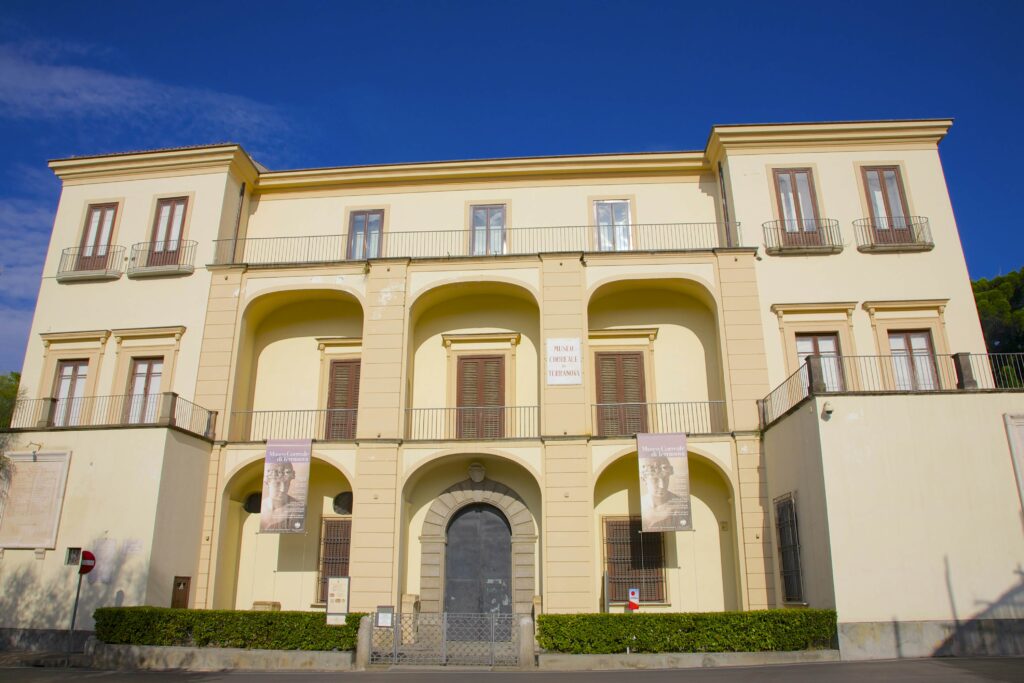
Located east of the city centre, this diverse museum offers something for everyone—whether you’re fascinated by antique clocks, drawn to archaeology, or captivated by fine ceramics. The collection spans Neapolitan arts and crafts from the 16th to the 19th century, featuring remarkable marquetry, as well as an impressive range of Japanese, Chinese, and European ceramics, clocks, fans, and more. On the ground floor, you’ll find ancient and medieval artefacts, including a fragment of Egyptian carving discovered near Sorrento’s Sedile Dominova.
The museum is housed in an 18th-century villa, generously donated to the city in the 1920s by Counts Alfredo and Pompeo Correale. Don’t miss a stroll through the villa’s gardens, where coastal views and rare botanical specimens offer a peaceful retreat.
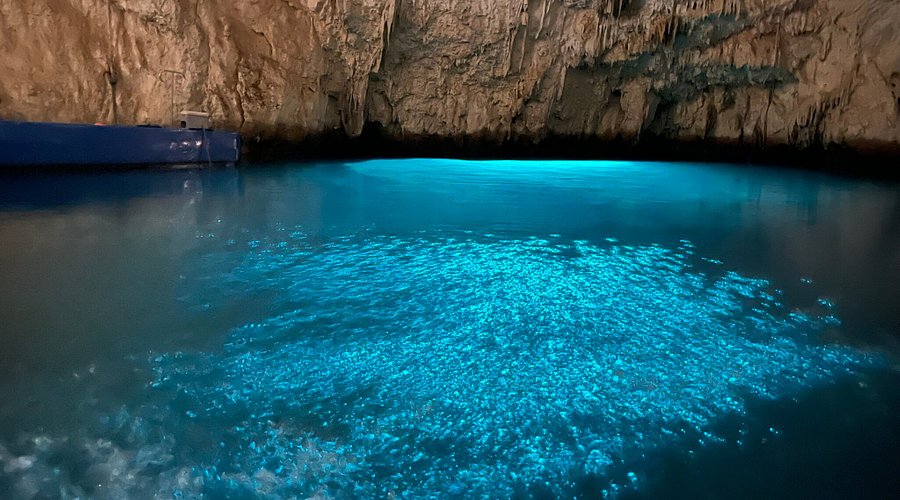
Roughly four kilometres west of Amalfi lies the Grotta dello Smeraldo, named for the mysterious emerald glow that fills its waters. Inside the cave, stalactites dangle from a ceiling 24 metres high, while stalagmites rise up to 10 metres, creating a dramatic and surreal landscape.
You can reach the grotto via regular buses that stop at the car park above the entrance, where a lift or staircase leads down to waiting rowing boats. Alternatively, Coop Sant’Andrea offers boat transfers from Amalfi for €10 return, with separate admission to the cave. Plan for about 90 minutes for the full round trip.
A unique feature of the grotto is the underwater nativity scene, placed 4 metres beneath the surface. Made of local Vietri ceramics and installed in 1956, it draws divers from across Italy who make annual pilgrimages on 24 December and 6 January to honour this submerged presepe.

A defining feature of nearly every Positano postcard is the vibrant, majolica-tiled dome of its main church—Santa Maria Assunta—the town’s most iconic landmark. Visit on a weekend and you’re likely to witness a wedding, as the church ranks among southern Italy’s most beloved venues for tying the knot.
Inside, the church houses a striking 13th-century Byzantine icon of the Black Madonna and Child, positioned above the main altar. Legend has it the image was stolen from Constantinople by pirates and secretly transported west.
Just outside, the piazza is adorned with an elegant 18th-century bell tower, standing apart from the main church structure.
Recent restoration work on the piazza and the crypt beneath the church led to the discovery of an ancient Roman villa. While it remains under excavation, its unveiling promises to add a new historical layer to Positano’s rich story.
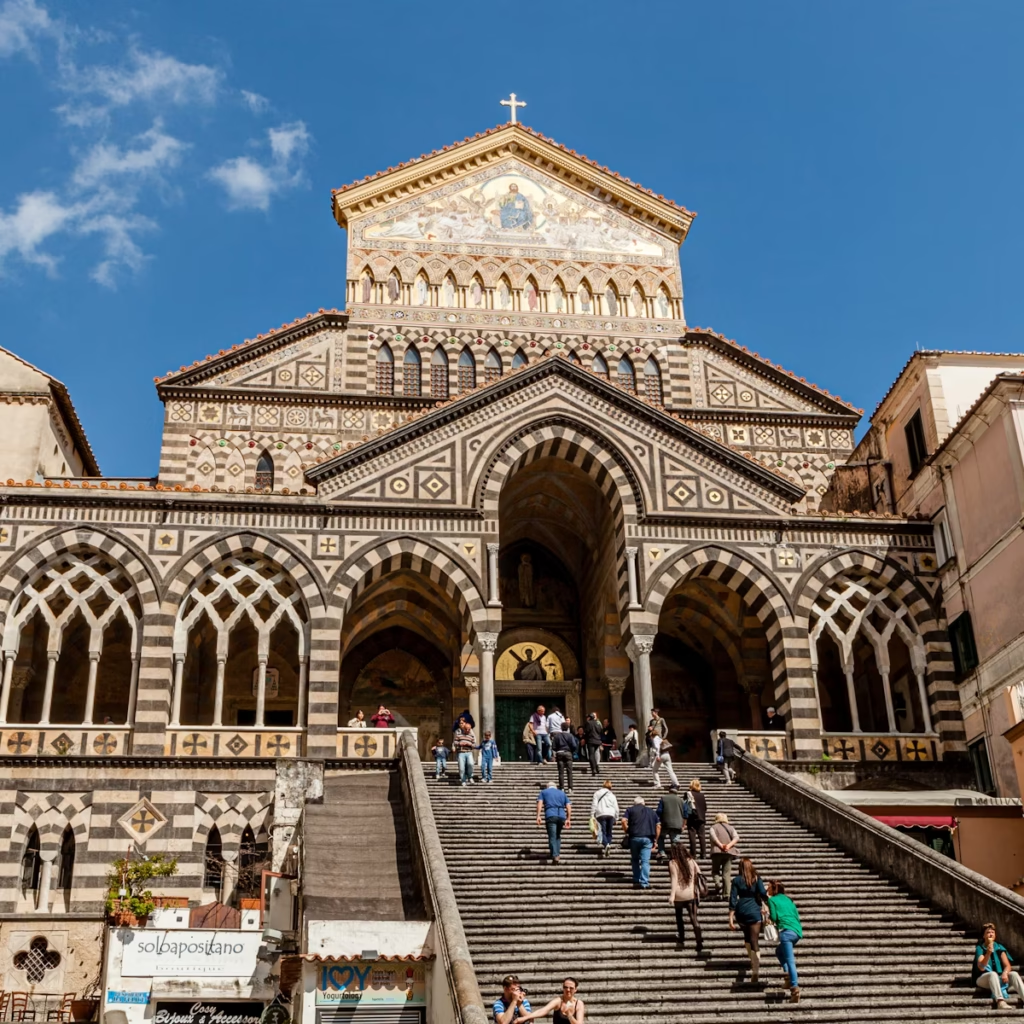
Since the 18th century, Sorrento has earned a reputation for its exquisite intarsio (marquetry) furniture—intricately inlaid woodwork known for its delicate craftsmanship and decorative flair. You can admire remarkable historical examples at this museum, many carved in the once-popular picaresque style. Housed in an 18th-century palazzo adorned with elegant frescoes, the museum also features a rich collection of paintings, prints, and photographs that portray life in Sorrento and its surroundings during the 19th century.
For those inspired to take a piece of Sorrento craftsmanship home, Gargiulo & Jannuzzi—one of the town’s oldest and most renowned marquetry shops—offers a fine selection and can arrange worldwide shipping.
WhatsApp us